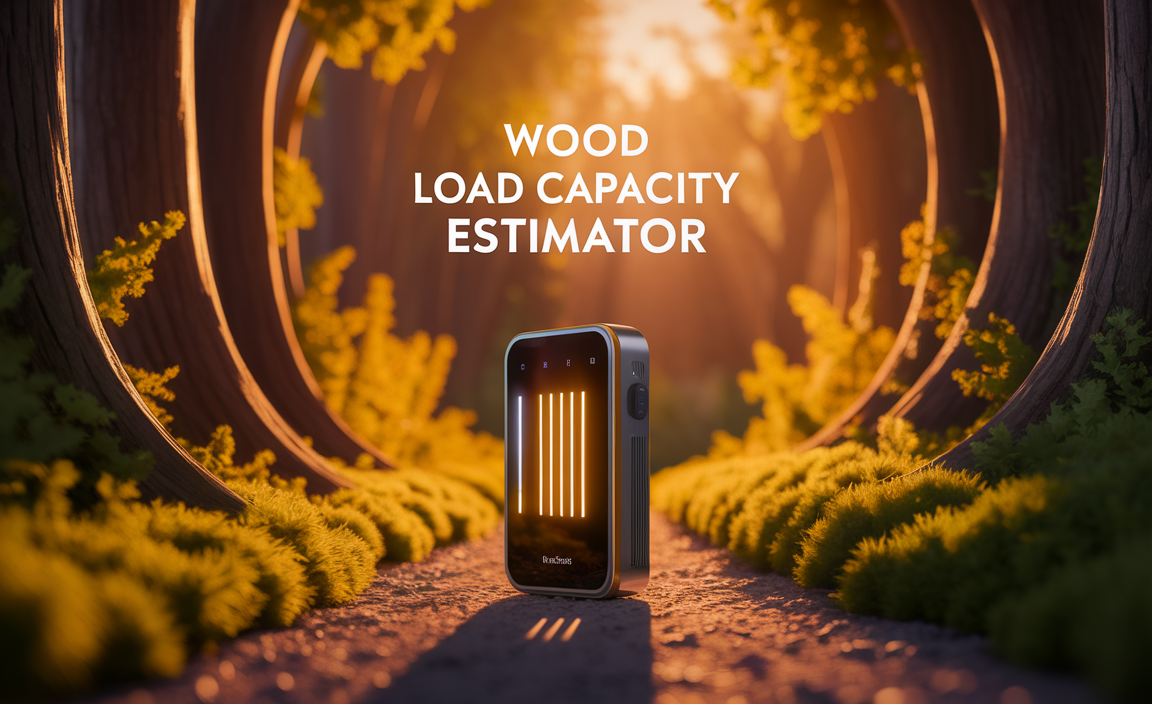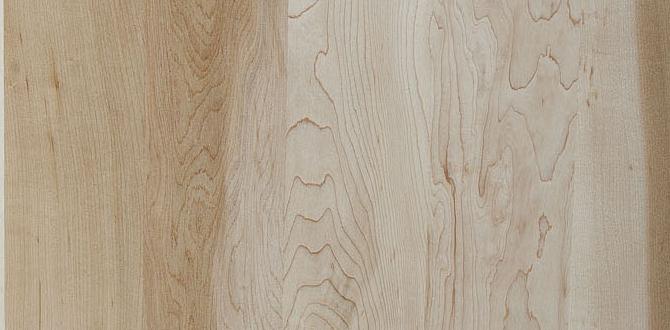The best framing nailer for small contractors offers power, reliability, and user-friendliness, making framing tasks faster and more efficient without breaking the bank. Look for a balance of performance, durability, and ease of maintenance.
Hey there! Jack Shaffer, your go-to guy for all things nail guns here. Tackling bigger DIY projects or even starting out as a small contractor? You’ve probably felt the frustration of doing things the slow way. Manually nailing studs, joists, and rafters can wear you down fast. That’s where framing nailers come in – they’re like a superpower for your projects! But with so many options out there, finding the right one can seem a bit daunting. Don’t worry, we’ll walk through it together, step-by-step, so you can pick a framing nailer that feels like an extension of your own hand. Get ready to build smarter and faster!
Table of Contents
Why a Framing Nailer is Your Best Friend
Using a framing nailer isn’t just about speed; it’s about transforming how you approach structural work. Think about building a shed, a deck, or even framing out a room in your house. These tasks involve lots of repetitive fastening. Doing this by hand with a hammer leads to:
Slow progress: Honestly, it takes ages.
Physical strain: Your arms and wrists will feel it after a long day.
Inconsistent results: It’s harder to get every nail driven perfectly.
A framing nailer changes all that. It drives nails quickly and powerfully, making those structural connections secure and consistent. For small contractors or serious DIYers, it’s not just a tool; it’s an investment that pays for itself in saved time and reduced fatigue.
Understanding Framing Nailer Types
Before we dive into specific models, let’s talk about the main types of framing nailers you’ll encounter. Each has its pros and cons, and understanding them will help you choose the best fit for your needs and workspace.
1. Pneumatic Framing Nailers
These are the workhorses of the framing world. They rely on compressed air from an air compressor to drive nails.
Pros:
Powerful: They can drive the largest nails with ease, perfect for tough lumber.
Lightweight: The nailer itself is usually lighter than cordless models because the motor isn’t onboard.
Reliable: Fewer complex parts mean less can go wrong.
Cost-effective: Generally cheaper upfront than other types.
Cons:
Requires an air compressor and hose: This adds bulk, noise, and cost, and limits your mobility.
Hose management: Kicking around a hose can be a tripping hazard or get snagged.
2. Cordless Framing Nailers (Battery-Powered)
These run on rechargeable batteries and don’t need an air compressor. They use either a gas cartridge and battery combination or just a battery to power a motor that drives the nail.
Pros:
Ultimate portability: No cords, no hoses means freedom to move anywhere.
Quick setup: Just grab and go!
Cons:
Heavier: The battery and motor add weight to the tool.
Less powerful for extreme needs: While much improved, some might struggle with very dense hardwoods or unusually thick nails compared to high-end pneumatics.
Maintenance: More complex with batteries, motors, and potentially gas cells.
Higher upfront cost: The battery technology adds to the price.
3. Gas Cartridge Framing Nailers
These use a small, disposable gas cartridge (like those for BB guns, but specifically for nailers) combined with a battery to fire nails. The gas ignites to drive the piston.
Pros:
Good power: Can handle tough jobs.
No air compressor needed: Offers good portability.
Cons:
Ongoing cost: You have to keep buying gas cartridges.
Temperature sensitive: Performance can vary in extreme cold or heat.
Fumes: Can produce an odor from the gas combustion.
Can be expensive to run: Cartridges add up quickly.
For most small contractors and serious DIYers focused on structural work, the choice often comes down to pneumatic for sheer power and reliability, or cordless for unmatched convenience and portability. We’ll focus on the best options in both categories.
Key Features to Look For in a Framing Nailer
When you’re shopping, here are the features that really matter for getting the job done right:
1. Nail Capacity and Type Support
Nail Size: Framing nailers typically drive nails from 2 inches up to 3-1/2 inches. Make sure the nailer you choose can handle the lengths you’ll commonly use for your framing needs. Most common for standard framing is 3-1/2 inch nails.
Nail Angle: Framing nails are usually driven at an angle (15°, 21°, 28°, 30°, 34°) to fit into tight corners and between studs. A 21° or 28° nailer is the most common and versatile for general framing. The higher the degree, the more nails you can fit into the magazine, but they are a bit less powerful than lower-degree nails. Always check what angle your lumber supply uses, especially for construction projects!
Magazine Capacity: How many nails can you load at once? More nails mean fewer stops to reload, improving workflow and efficiency on big jobs.
2. Power and Depth Adjustment
Driving Power (PSI for Pneumatic): For pneumatic nailers, you’ll need to ensure your air compressor can deliver sufficient PSI (pounds per square inch) to power the nailer effectively. For cordless, it’s about the motor’s strength.
Depth of Drive: This is crucial! You want to be able to adjust how deep the nail penetrates the wood. Too shallow, and the nail won’t hold. Too deep, and you’ll damage the wood or drive the nail head flush if you don’t want it to sink. Easy-to-use depth adjustment knobs are a big plus.
3. Firing Modes
Sequential Fire (Single Shot): This mode requires you to press the safety contact tip against the wood and then pull the trigger to fire one nail. This is essential for accuracy and safety, especially when precision placement is key.
Contact Fire (Full Sequential/Bump Fire): In this mode, you hold down the trigger and simply bump the safety tip against the wood to fire nails rapidly. This is great for speed on non-critical framing when speed is the priority. Many good framing nailers offer a selector switch to easily toggle between these modes.
4. Ergonomics and Weight
Grip: A comfortable, non-slip grip is vital, especially when working for long periods.
Balance: A well-balanced tool feels less fatiguing.
Weight: While you need power, a lighter tool will reduce arm fatigue significantly over a day of framing. This is where battery-powered models often trade some heft for convenience.
5. Durability and Maintenance
Build Quality: Look for solid construction. Metal components are generally more durable than plastic.
Ease of Maintenance: Can you easily clear jams? Is the nose piece accessible? Some nailers feature tool-free jam clearing, which is a huge time-saver. Regular maintenance, like oiling pneumatic tools or cleaning battery contacts, will extend their life. For more on tool maintenance, check out resources from NIST.
6. Airless vs. Air-Powered (for Pneumatic)
Airless (Cordless/Gas): As discussed, these are self-contained. Great for mobility.
Air-Powered (Pneumatic): These require an air compressor and hose. They are often more powerful and less expensive upfront if you already own a compressor.
Top Framing Nailer Recommendations for Small Contractors
Based on common needs for power, reliability, and user experience, here are some highly-regarded framing nailer options. We’ll look at a few excellent choices that balance performance and value.
It’s essential to note that “best” can be subjective and depend on your specific workflow and budget. These are generally top performers known for their quality.
High-Performance Pneumatic Options
These are the go-tos when extreme power and reliability are paramount.
1. Hitachi/Hikoki NR90AES1 or NR90DH(S)
Why it’s great: These are arguably the most popular framing nailers for a reason. They offer excellent power, are relatively lightweight for their class, and are known for their durability. The NR90AES1 is pneumatic, while the NR90DH(S) is a popular cordless option from the same brand.
Key Features: Drives 2″ to 3-1/2″ nails, 21° plastic collation, depth adjustment, industrial design.
Ideal for: General framing, sheathing, subflooring.
2. DeWalt D51823
Why it’s great: DeWalt is a trusted name, and this pneumatic framing nailer delivers. It’s known for its robust construction and ability to drive nails consistently, even into hardwoods.
Key Features: Drives 2″ to 3-1/2″ nails, side-load magazine for easy reloads, adjustable depth, powerful motor.
Ideal for: Heavy-duty framing, aggressive use.
Top Cordless Framing Nailer Options
For ultimate freedom of movement.
1. DeWalt 20V MAX XR Cordless Brushless Framing Nailer (DCN692)
Why it’s great: DeWalt’s cordless offering is a standout. It uses a brushless motor for more power and efficiency. It offers both speed and precision.
Key Features: Drives 2″ to 3-1/2″ nails, 20° (plastic collation), tool-free jam and stall release, selectable trigger (sequential or contact). Runs on DeWalt’s robust 20V battery system.
Ideal for: Framing, fencing, any job where an air compressor is inconvenient.
2. Metabo HPT NR1890DR
Why it’s great: This is Metabo HPT’s (formerly Hitachi) cordless answer. It’s a powerful cordless option that uses a direct drive engine system for consistent nail driving.
Key Features: Drives 2″ to 3-1/2″ nails, 21° plastic collation, tool-free depth adjustment, tool-less nose release for jams. Uses their 18V battery platform.
Ideal for: Those who want cordless convenience with pneumatic-like power.
Budget-Friendly Considerations
If budget is a significant factor, don’t despair! You can still find reliable tools.
Porter-Cable PCFP12234 Framing Nailer Combo Kit: This is a popular choice for DIYers and smaller jobs. It’s a pneumatic kit that often includes an air compressor, hose, and the nailer at a very competitive price. While not as heavy-duty as some professional lines, it’s a great entry point.
Used Tools: Sometimes, you can find excellent deals on lightly used professional-grade nailers from reputable brands. Just ensure they are in good working condition.
Pneumatic vs. Cordless: Making Your Choice
To help you visualize the trade-offs, let’s break it down in a table.
| Feature | Pneumatic Framing Nailer | Cordless Framing Nailer (Battery) | Gas Cartridge Framing Nailer |
|---|---|---|---|
| Power | Excellent, consistent. Can be adjusted with compressor. | Very good, improving with brushless motors. Can vary with battery charge. | Good, consistent per cartridge. |
| Portability | Limited to hose length. Compressor setup required. | Highest. No hoses or compressors needed. | High. No hoses or compressors needed. |
| Weight (Tool Only) | Generally lighter. | Heavier due to battery/motor. | Moderate. |
| Upfront Cost | Lower for nailer, but requires compressor. | Highest, especially with batteries. | Moderate to High. |
| Running Cost | Low (electricity for compressor). | Moderate (electricity to charge batteries). | High (ongoing cost of gas cartridges). |
| Maintenance | Simple (oiling, filter). | More complex (battery care, motor). | Moderate (cleaning, cartridge replacement). |
| Best For | Workshops, job sites with power; heavy-duty use. | Mobile work, remote sites, convenience is key. | Occasional heavy use where compressor/battery isn’t feasible. |
Consider your typical job environments. If you’re always working on a dedicated shop or a site with easy access to power, a pneumatic setup is fantastic. If you’re frequently moving around, working on roofs, or in places without easy power access, a cordless model will be a game-changer.
How to Use Your Framing Nailer Safely and Effectively
Getting the right tool is only half the battle. Using it safely and wisely ensures you get the best results and avoid injuries.
Safety First!
Nail guns are powerful tools and must be treated with respect. Always follow these safety guidelines:
1. Read the Manual: Every nailer is slightly different. Understand your specific model’s functions and safety features.
2. Wear Safety Gear: Always wear safety glasses or goggles. Hearing protection is also highly recommended, as these tools can be loud. Sturdy work boots are a good idea for foot protection.
3. Never Point at Anyone: Treat a loaded nailer like a firearm. Never point it at yourself or others.
4. Disable When Not in Use: Disconnect from air (pneumatic) or remove the battery (cordless) when the tool is not in use, when clearing jams, or when passing it to someone else.
5. Understand Firing Modes: Be aware of whether your nailer is set to sequential or contact fire. Use sequential mode for accuracy and safety. Only use contact fire when you intentionally want to fire rapidly on a surface that is ready for a nail.
6. Never Mod the Safety: Do not disable or tamper with the safety contact tip. It’s there to prevent accidental firing.
7. Secure Your Work: Ensure your workpiece is stable. Do not operate the nailer when you are unbalanced or reaching too far.
Step-by-Step: Loading and Firing
Let’s walk through using your framing nailer. We’ll assume a pneumatic nailer for the primary steps, but the core principles apply to cordless too.
1. Prepare Your Nailer:
Pneumatic: Ensure your air compressor is on and has enough pressure (check your nailer’s recommended PSI range, usually between 70-120 PSI). Connect the air hose securely to the nailer’s air fitting.
Cordless: Make sure the battery is fully charged and properly inserted.
2. Load Nails:
Locate the magazine on your nailer.
Press the spring-loaded follower mechanism back.
Insert the appropriate nails (right angle, size, and collation type – usually plastic for framing nails) into the magazine. Ensure they are aligned correctly. Most framing nailers take a strip of nails.
Release the follower mechanism gently so it holds the nails in place.
For pneumatic nailers, check the air pressure again if you adjusted it.
3. Select Firing Mode (if applicable):
If your nailer has a mode selector, choose “Sequential Fire” for precision. When you need speed and are comfortable with the tool, you can switch to “Contact Fire.”
4. Position the Nailer:
Place the nose of the nailer firmly against the surface where you want to drive the nail. Ensure the safety contact tip is flat against the wood.
5. Drive the Nail:
Sequential Fire: Press the trigger completely. The nail will fire.
Contact Fire: Ensure the trigger is held down. Then, bump the safety contact tip against the wood. The nail will fire. Release the trigger after cycling through desired nails.
6. Remove and Repeat:
Lift the nailer away from the workpiece.
Reposition for the next nail and repeat the process.
7. Clearing Jams:
If a nail jams, immediately disconnect your air hose or remove the battery.
Most nailers have a nosepiece that can be opened for access. Consult your manual.
Use pliers or the tool provided to carefully remove the jammed nail.
Once clear, reassemble, reconnect power, and test on a scrap piece of wood to ensure it’s working correctly before returning to your main work. Tool-free jam clearing


